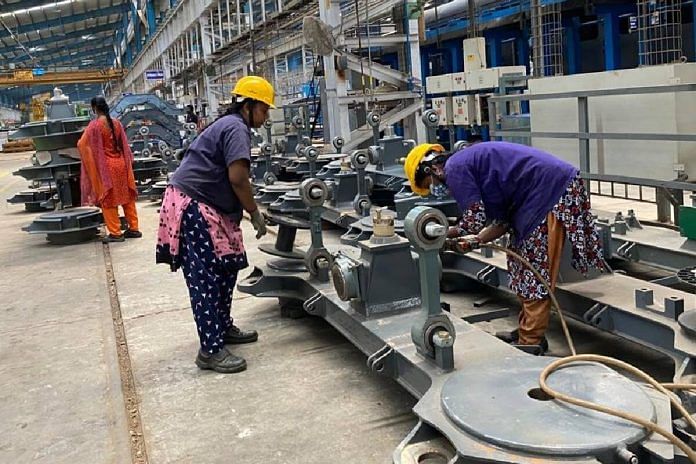New Delhi: India’s Gross Domestic Product (GDP) is estimated to grow at 6 per cent in the upcoming financial year 2023-24, slower than the 7 per cent estimated for the current year 2022-23, according to CRISIL.
In its report ‘Rider in the Storm: Tracing India’s Growth in a Volatile World’ published Thursday, the research and ratings agency said that “in fiscal 2024, the Indian economy will grow a tad slower, hemmed in by sluggish exports and the lagged impact of rate hikes manifesting fully”.
However, it also said that corporate revenue would continue to grow in double digits, buoyed by strong domestic demand.
On the inflation front, CRISIL predicts that retail inflation will average 5 per cent over 2023-24, lower than the 6.8 per cent it has averaged in 2022-23 so far. This lower estimate is based on the view that “lower commodity prices, expectation of softer food prices, cooling domestic demand, and base effect” will help moderate inflation.
“India’s medium-term growth prospects are healthier,” Amish Mehta, managing director and CEO of CRISIL said. “Over the next five fiscals, we expect GDP to grow at 6.8 per cent annually, driven by capital and productivity increases,” Mehta added.
“What is also good to see is the increasing sustainability footprint of capex (capital expenditure),” Mehta said. “At present, nearly 9 per cent of the infrastructure and industrial capex is green. We see this number rising to 15 per cent by fiscal 2027.”
Also Read: GDP data shows how well Nirmala Sitharaman handled pandemic economy. Critics judged too soon
The story so far
“As the Indian economy battled the four Cs— Covid-19, conflict (geopolitical), climate change, and central bank actions — it has shown a fair degree of resilience, particularly in the absence of a direct, large fiscal push to consumption,” the report said.
However, CRISIL also said that the growth pattern incorporates and highlights two key features. The first is that the economy seems to have recovered faster in nominal terms than in real terms, with high inflation accounting for the difference.
“Second, official data revisions released in February reveal that the economy was more resilient than estimated earlier,” it said.
As such, it also argued that there were four broad factors that resulted in this quicker-than-expected recovery.
The first, it said, was that higher government spending on infrastructure creation and on welfare schemes allowed a faster catchup in the construction and public administration sectors.
Second, buoyant global demand following the pandemic greatly boosted India’s exports from not only the manufacturing sector, but also in terms of services such as information technology (IT) and IT-enabled services (ITeS), and other professional services.
The third factor that helped was an “inflow of abundant global liquidity into Indian markets” and “policy intervention–from fiscal and monetary policies—supporting the banking and financial services sectors”.
The fourth element that greatly helped India’s post-Covid recovery, according to CRISIL, was consecutive years of good rainfall, which helped the agriculture sector.
Also Read: Indian economy growing faster than China’s. But if you look at big picture, neither’s winning yet
The path ahead
“Slowing global growth will reduce demand for India’s exports and affect domestic industrial activity in those sectors,” CRISIL wrote, adding that, “The full-blown impact of RBI’s tighter monetary policy, which typically plays out with a lag of 3-4 quarters, will show up in the coming months.”
Continued geopolitical strife will keep commodity prices elevated compared with the pre-pandemic years and can create headwinds for growth, the report said.
On the flip side, the report added that corporate balance sheets are looking healthy and that a “robust” banking system and the government’s capex thrust should create momentum and support fixed investment.
“Going forward, we expect government capex support to moderate as pressure to fiscally consolidate rises,” it said.
“Meanwhile, private capex is expected to start seeing an uptick. Private consumption, which has been slow to recover compared with exports and fixed investment, has more recently been driven by a pick-up in contact-based services, some improvement in rural incomes, and resilience in urban demand,” the report added.
(Edited by Richa Mishra)
Also Read: India’s GDP still expected to grow 7% in 2022-23, but Q3 growth slows down to 4.4%



